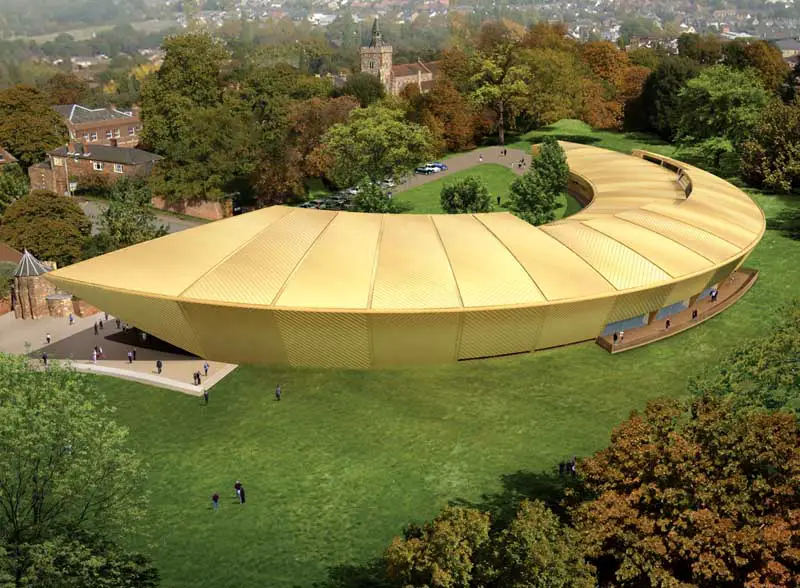
The opening of a gallery is an exciting day for any contemporary art organization. Firstsite in Colchester, the site of Britain’s first Roman city, are no doubt to be congratulated on achieving such a large new space, designed by Rafael Vinoly, to support their exhibition programme. While the planning of the building astutely supports its programme, its object form is a one-liner which is variable in its success.

The entry facade is the strongest aspect. An angled window wall reflects newcomers and firstsite’s past location, Minories Art Gallery, now home to the Colchester School of Art, Design and Media. The cladding boldly frames this picture window, its overhang providing an enveloping appropriate for entry. The actual entry though is less exciting, a glazed box, desiring invisibility. The strength of the entry picture window is sadly compromised here.
The £16 million building’s plan is a fleshy arc. Its outer curve demonstrates the height of this bold gesture, the outer wall leaning outward as it curves. Its golden cladding though is uncomfortably surreal, the building as if still in its computer rendered stage. Time will no doubt bring a welcome softening to bear on its current visual harshness, though the 0.5mm copper alloy sheets are reputedly formulated to retain their golden glow.
I’m not a fan of the herringbone strategy which gives detail to the cladding. It might be argued that it brings complexity to the singularity of the building’s form, but to me it undermines it. This is most apparent on the inner most curve which resembles a line of sic-fi bathing sheds, a la “Red Dwarf,” or a camp of celestial garages.

The interior is slick, primarily white, of course, and, while an attempt to reflect the exterior occurs inside, the inevitable smaller boxes within the larger, more complex curvature sits awkwardly. Because of this commitment to the gallery as white box, curators will find the spaces a pleasure rather than a challenge to exhibit in, relying on the art rather than its context to provoke.
Good on firstsite for achieving this ambitious project. The architecture though is fine, rather than contemporary-art revolutionary, but it has already gained appreciation by the locals, among whom it is known as the “golden banana.”

Leave a Reply